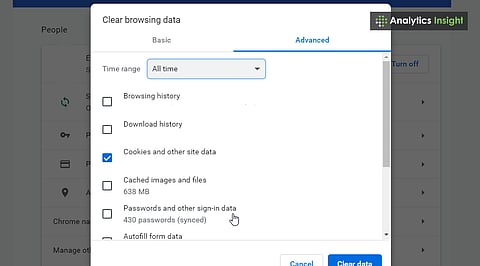

Clearing the cache improves Chrome’s speed and performance.
It helps fix website loading and display problems.
The process is quick, easy, and works on desktop and mobile.
A slow-working Google Chrome can be very frustrating, especially when trying to work or watch videos. One of the major reasons for such poor performance is a full cache. This means that the browser saves bits and pieces of websites so they load faster the next time you visit them.
However, over time, these files can pile up and cause problems. Cleaning the cache regularly often increases the browsing speed, frees up space, and fixes unexpected glitches. This guide provides a step-by-step guide on how to clear cache in Chrome, whether you are using a computer, laptop, or phone.
When you visit a website, Chrome saves images and the layout of the page so that the site loads faster the next time. For example, if a website has a logo, Chrome saves the image so it doesn't have to download it every single time.
However, sometimes the cache saves old versions of files, which can cause issues with loading a page, login errors, or displaying outdated content. Clearing the cache ensures that Chrome extracts the latest information from websites.
Here are some reasons why clearing your cache can be beneficial:
Speed Boost: Removing old files can help Chrome run faster.
Fixes Problems: It can solve issues like web pages not loading properly.
Frees Up Space: Cached files can take up a surprising amount of storage.
More Privacy: Clearing the cache can reduce online tracking by websites.
Whether you are a desktop user or a Mac user, since the Chrome interface remains the same, the process to clear cache also remains the same:
Open Chrome and click the three dots in the upper-right corner.
Click on Settings, then Privacy and Security.
Select Clear browsing data.
A pop-up window will appear. Choose a time range (e.g., Last hour, Last 7 days, or All time for a complete reset).
Check the box that says Cached images and files. (You can also select browsing history or cookies if you want.)
Click Clear data.
Chrome should now run faster and display updated versions of the websites.
Both Android and iPhone users can follow the steps below:
Open the Chrome app.
Tap the three dots usually present at the bottom-right on iPhones, top-right on Android devices.
Click on History, then Clear browsing data.
Choose a time range like Last 24 hours or All time.
Select Cached images and files.
Tap Clear data.
Your phone's browser should feel faster now.
Here are some tips to help users browse smoothly on Google Chrome:
Use Incognito Mode: In this mode, Chrome won't save the cache or browsing history.
Set Reminders: Clear your cache every few weeks to maintain smooth performance.
Sync Across Devices: If you use a Google account, you can sync your Chrome settings and manage the cache on all your devices.
Also Read: Google Chrome vs. Microsoft Edge: Which Browser Works for You?
Cache isn’t always bad, as it helps frequently visited websites load faster. If the cache is cleared, then these sites might take a little longer to load the first time after the reset. Additionally, if cookies are also cleared, users may need to log back into websites.
If Chrome starts running slowly or websites display errors, clearing the cache is often the simplest solution. It improves speed, frees up space, and ensures the latest version of the pages is displayed. Clearing the cache occasionally helps users browse smoothly.
1. What happens if I clear the cache in Chrome?
It removes stored website files, speeds up browsing, and fixes loading issues.
2. Will clearing the cache delete my passwords?
No, clearing cache only removes temporary files, not saved passwords.
3. How often should I clear Chrome’s cache?
Every few weeks or whenever websites start loading slowly or incorrectly.
4. Does clearing the cache improve Chrome speed?
Yes, it removes old files that can slow down the browser.
5. Can I clear the cache on both desktop and mobile?
Yes, Chrome allows cache clearing on computers, Android, and iOS devices.
